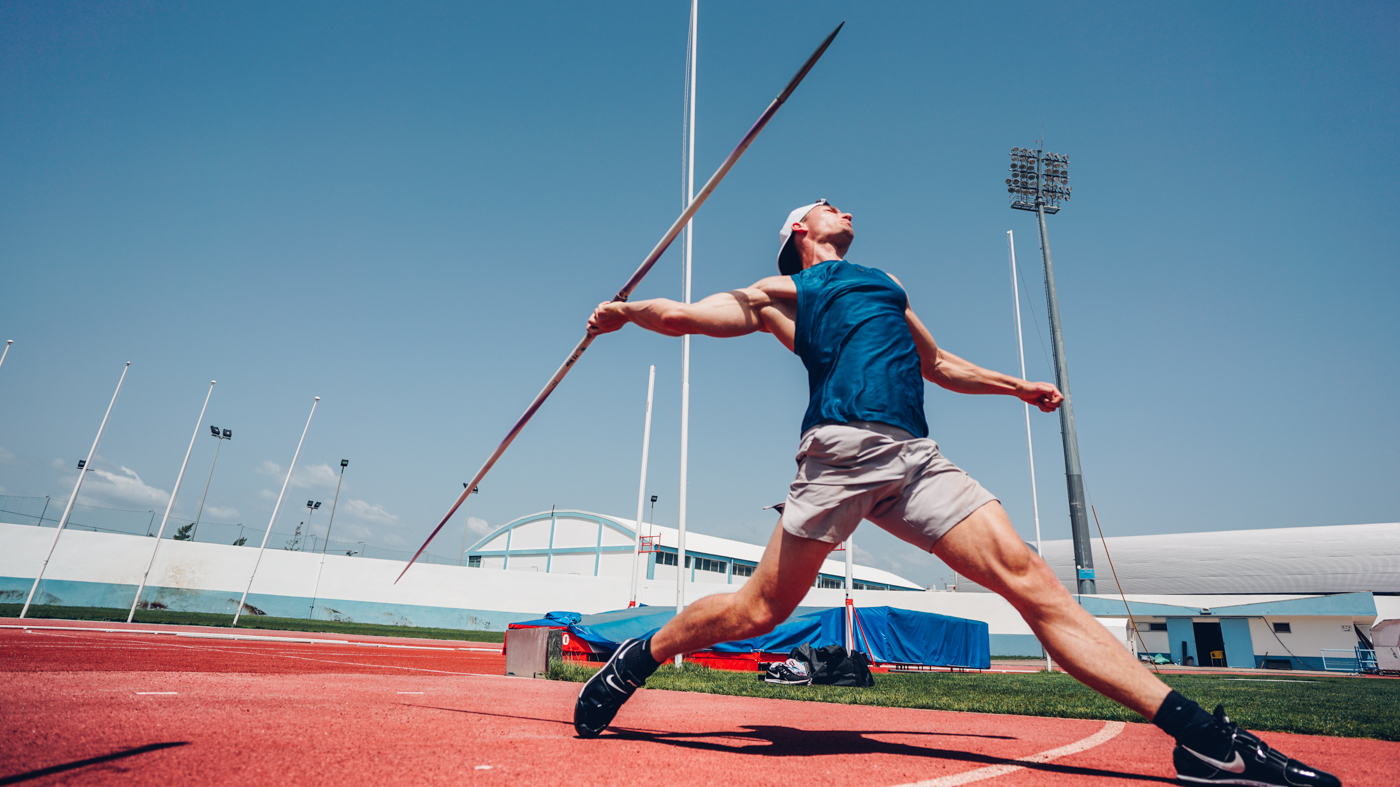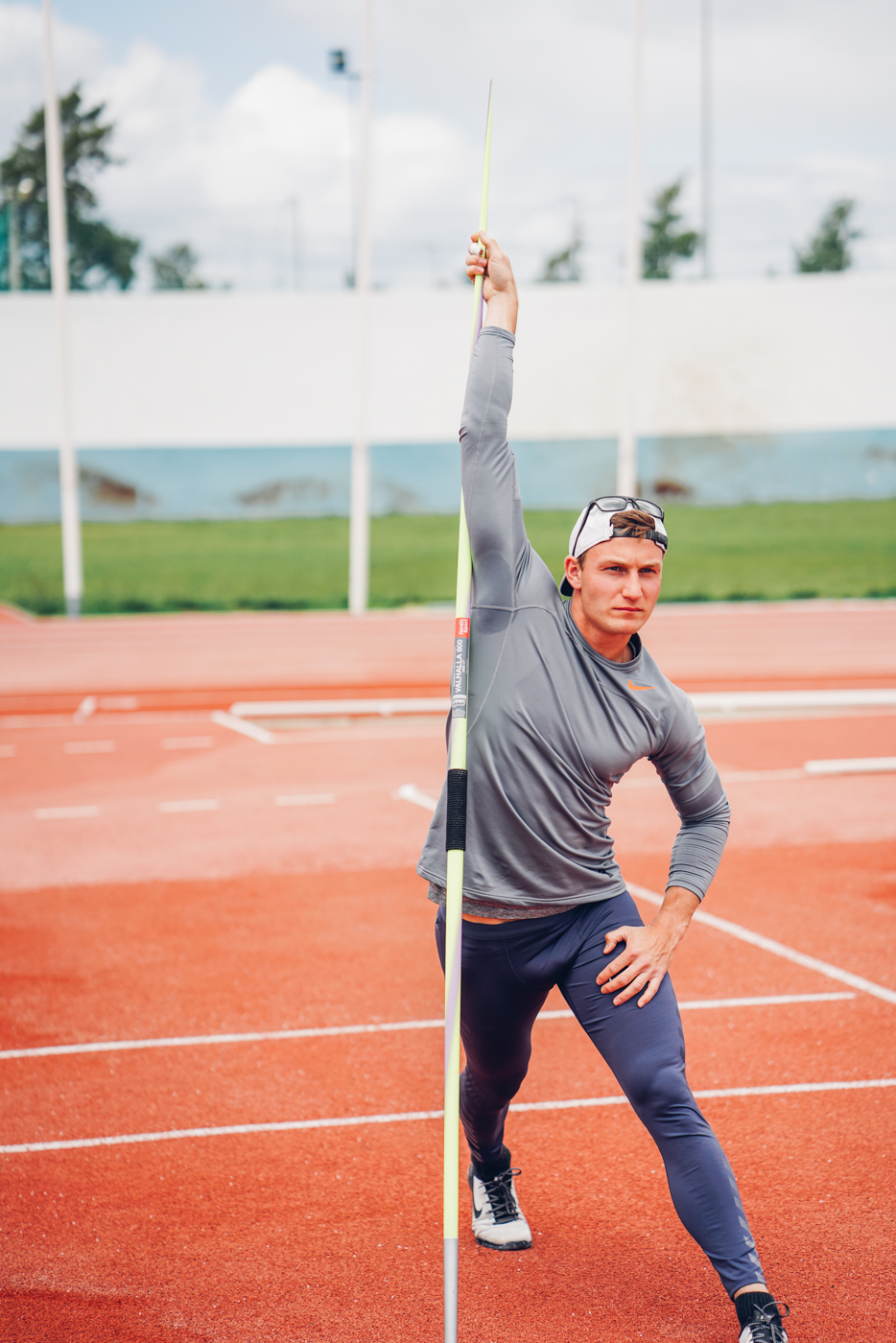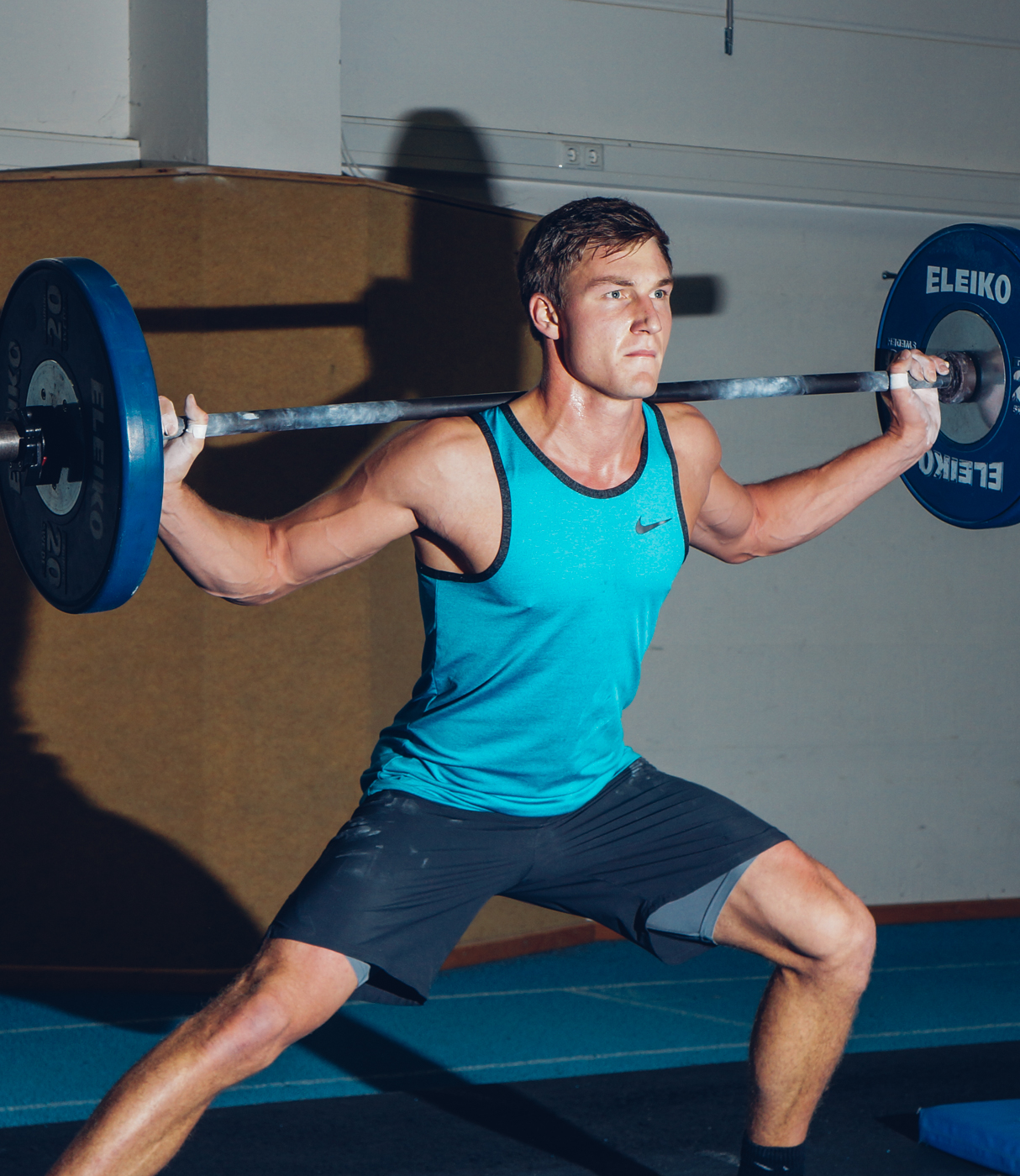Some time ago I asked you about your interest in technical insights on my Instagram channel, the feedback was huge and I decided to give you deeper insights into the javelin technique on my blog. Many talented javelin throwers have problems judging correctly to use the block leg
correctly and efficiently, so this article is dedicated to blocking in the javelin throw.
Why is the block so important?
When we look at how the javelin goes far, it quickly becomes clear that release speed and release angle are crucial parameters. This is explained in detail in the article on the biomechanics of the javelin throw. But what does the block do? A strong, efficient block from an optimally fast run up results in the impulse that is individually optimal for an athlete, directing the ground reaction forces along the muscle loop across the hip area to the limb. If the block does not work efficiently, this crucial mechanism will not work.
Block leg action
The phase from placing the accelerating leg to the setting of the blocking foot is often described as a block phase. I am more of a friend of the description of the block later in the movement description, because just after putting on the block foot the real blocking is going on. The often described setting time between set of accelerating foot and blocking foot is definitely enormously important, but is not considered in this blog entry.
A good and efficient block is dynamic, powerful, properly timed and related to the upper body. The block foot points in throwing direction or even slightly outward (see Thorkildsen). The often approach of the inwardly rotated block foot for ball throwing is injury-intensive and does not meet the demand of the dynamics for elite throwers. The knee should remain stretched throughout the block phase to protect joints and ensure optimal transmission of power.
The prerequisite for a clean block is always a solid surface and footwear adapted to the target speed. Following another important part is of course the javelin spike that holds the forces.
Active or passive
Whether blocking is more actively activated or passively exploited is what I personally see as a question of philosophy and style. What matters is the stretched and powerful end result. Some athletes want to put the block actively on the ground, which definitely makes sense, others understand the block move as a “run into the block” both approaches are worthwhile in the trial to find the best individual approach.
Is that also possible with bent knee?
Many will wonder how top athletes such as Breaux Greer, Julian Weber or Vitezlav Vesely could realize enormous throws despite bent block legs. The trick here is definitely a long learned and proven timing. As soon as the knee, bent while blocking, remains stiff at exactly the right moment, the force transmission is similar to that of the extended stems. Only the timing window for the timing is much narrower.
The right rhythm
When athletes contact me on social media and send out a cry for help, I often have to remind them of a solid start-up rhythm. Without a proper knee lift in controlled speed, a decent block is hardly feasible. The block is already getting prepared with the upper body position and the frequency in the cross steps. There is no general recipe for success or a formula of stride length and frequency, everyone must determine the individual optimum at this point and adjust it again and again in the training process.

Common mistakes
- No or little stretched knee
- Too late stretching of the block in the throwing motion
- Lack of preparation of the block in the competition movement / run up
- Lack of perception of the movement
- Too fast / uncontrolled run up
- Foot of the block lands on the forefoot or bale
Exercises for the block leg
Physical skills must always be adapted to the target speed and expected forces in javelin throwing. One must always be aware that impulses and ground reaction forces have a much higher impact on the body than the athlete is actually able to produce by himself. That means you have to be prepared for high dynamic forces from the outside in order to prevent injuries and to be able to convert the forces into throwing distance.
Physical preparation
As many know, I am not a fan of very specific exercises that appeal to very few body regions, but a few classics are mentioned below:
- Squat variations with the free-weight dumbbell
- Eccentric hamstring training
- Cleans
- Lunges
- boxjumps
- jumps in general
Coordinative preparation and exercise
In addition to the physical prerequisites, blocking requires a high level of coordination in fast movement tasks, so the following training approaches are also recommended:
- Sports games like badminton or volleyball
- Coordination Drills
- Response sprints
- Rhythm school with javelin
Improvement of the perception of movement
Many young athletes have a rather instinctive idea of throwing that does not always meet the required or desired technical picture. Here I definitely recommend video-motoric training for better understanding of the movement. With YouTube and Instagram, every athlete has a huge reservoir of excellent video footage.
Practice, practice, practice
The block is only one part of the enormously complex movement of the javelin throw and is incorporated as an elementary part in a construct of movement sequences and timing. It is easy to spot flaws in blocking, which becomes clear when you look at the enormous feedback on “blocking issues” on the social media channels. It is really important to develop the understanding that the preparation of blocking happens in rhythm and many problems are more in the physical and mental preparation. Adding the right amount of competitive temper definitely requires a bit of courage. To develop that it requires many patient practice sessions with throws of low and slowly increased intensity. Many athletes look like a natural talent of blocking, to which I like to count myself also, since luckily I never had to think much about the movement blocking myself. Much more is for some naturally good blockers the devil in the detail of the right timing.

